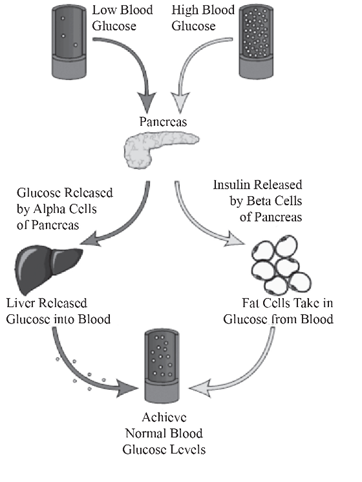Outline the process by which insulin and glucagon work to regulate blood glucose levels. Use a diagram to support your explanation
Outline the process by which insulin and glucagon work to regulate blood glucose levels. Use a diagram to support your explanation.
Insulin and glucagon, combined, help sustain a state called homeostasis under which conditions stay steady within the body. This equilibrium helps supply the cells with adequate energy while minimizing the damage to the nerves resulting from chronically elevated blood sugar levels.

Insulin:
Foods containing carbohydrates are transformed into glucose through digestion. Any of this glucose is sent to the bloodstream, which allows blood glucose levels to increase. This spike in blood glucose signals insulin release from your pancreas. Insulin tells cells to draw up glucose from the plasma throughout the body. Your blood glucose levels go down as the glucose passes through the cells. Glucose is used by certain cells as storage. Some excess glucose is processed as a material called glycogen by other cells, such as the liver and muscles. The body uses glycogen for food between meals.
Glucagon:
To maintain the behavior of insulin, Glucagon functions.
The glucose levels in your blood drop around four to six hours after you feed, allowing your pancreas to release glucagon. This hormone informs the cells of the muscle and liver to transform the reused glucose into glycogen again. The sugar will then continue to be produced into the bloodstream by these cells so that the other cells can use it for power generation.
This entire feedback mechanism is continuously in motion with insulin and glucagon. It prevents your blood sugar levels from falling too low, providing a constant supply of energy for your body.
Step by step
Solved in 3 steps with 1 images








